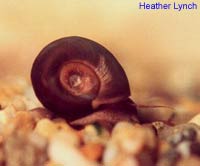I seem to be having similar problems, except the fry are dying after the first day or two.
Fry were almost all corydoras aeneus with possibly a couple of trilineatus.
-I'm moving the eggs from the community tank, then hatching them in a 'clean' tank and moving the fry to a raising tank.
-The tank seems clean, water change every day (water is kept in large bucket and aerated so it is consistent for changes), light aeration, removal of anything fuzzy (dead fry or bits of floatsome) twice to three times daily.
-I haven't started feeding yet (still yolk sack left on all fry).
-I'm using anti bacterial/fungal MarOxy from the egg stage on.
-Fry seem lively, cluster together on bottom of tank.
-After first day a couple of fry appear to be bent backward. No fungus is visible. The fry are either dead or near death.
-I have tried removing the dead and dying fry and medicating.
-I have tried removing all good fry to a clean tank and medicating.
-I have tried a shallow layer of sand in the tank.
-I have tried a bare bottom tank.
-I have tried small snails (ramshorns, trumpets, baby mystery) they seem to make things worse in the bare tank, the baby mystery snails actually die and create fungus outbreaks.
(By the way, Apple snails will eat eggs and fry if they are bigger than hatchlings.)
-By the second day nearly half of the fry are gone, fuzz can be seen on some of the dead fry, and most have the bent back.
-By the third day all of the fry are dead.
This has happened three times within the past few months. The first batch of fry was from my Pepper corys, the other two were mostly corydoras aeneus.
The really frustrating part is that I have successfully raised hundreds of corydoras aeneus a couple of years ago. Of course I didn't really have the space for them then, so they had overwhelming survival rates.

Suggestions? Opinions?
Thanks
Pam Spencer







